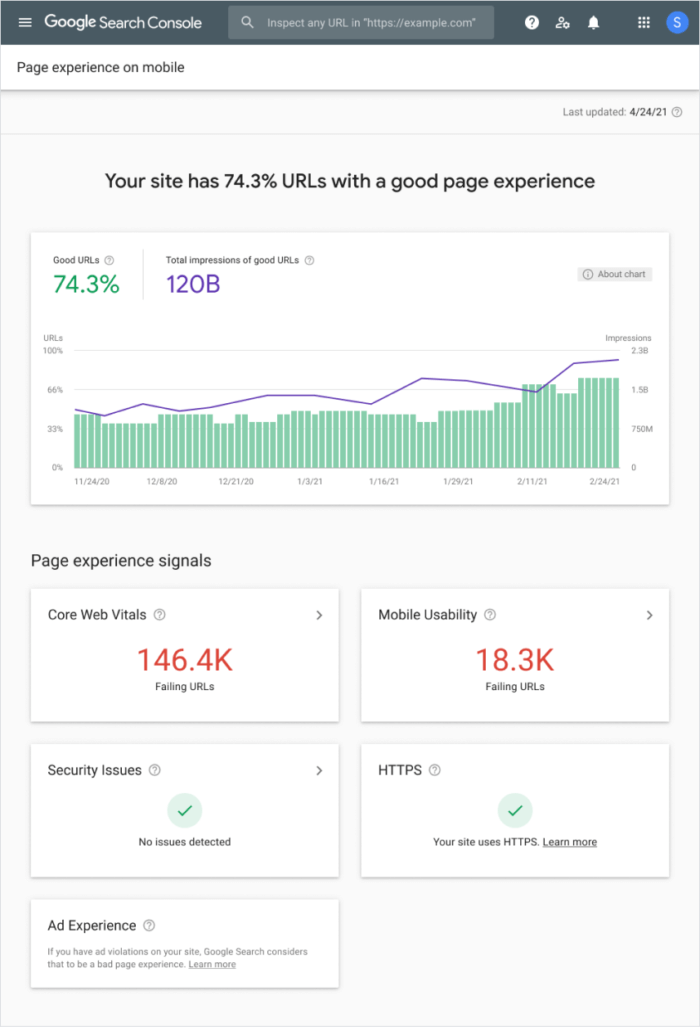Improving Your Website’s User Experience to Boost SEO
 May 6, 2021 | By Ilfusion Team
May 6, 2021 | By Ilfusion Team
The previous year, Google announced that they are planning to add a new ranking signal called Core Web Vitals, which was slated to roll out this May 2021. However, Google has recently pushed back the implementation to mid-June, giving us more time to prepare for this big change.
What Is the Page Experience Algorithm?
The Page Experience algorithm, as the term suggests, is a suite of ranking signals that gauge a user’s overall experience on a given web page.

Image source: Google Webmaster Central Blog
The new Page Experience report on Google Search Console combines the Core Web Vitals report (Loading, Interactivity, and Visual Stability) with their other ranking signals such as:
- Mobile usability
- Security issues
- HTTPS usage
- Ad experience
Google also added that the roll-out will be gradual to allow for a less drastic change and to carefully monitor any unexpected issues. They are targeting to complete the implementation by the end of August 2021.
4 Tips to Improve Your Website’s User Experience
How do you prepare your website for this change? Here are a few things you can do now to help boost both your Page Experience and SEO:
1. Ensure that your website is mobile-friendly and usable
In spite of the fact that more than half of the world’s population (67.1%) use their mobile device to surf the internet, there remain a number of websites that are considered non-mobile-friendly. If your website isn’t built for mobile use, it’s high time to make the change now.
Additionally, even if your website has a responsive web design, its usability matters more. In fact, 83% of mobile internet users expect a “flawless” experience when accessing websites from their phones.
Here are a few things you can do to get started:
- Monitor your website’s Mobile Usability report in Google Search Console and fix errors as soon as possible
- Spot-check individual pages on Google’s Mobile-Friendly Test
2. Check for security issues
With people’s increasing reliance on the internet, website security is important now more than ever, and Google is including this as a key part of their Page Experience algorithm.
If you haven’t already, make sure that your website runs on HTTPS. Newly created websites by default run on HTTP (which is non-encrypted), so you will have to switch to HTTPS (which is encrypted) by doing the following:
- Purchase an SSL certificate. Your web hosting provider may offer this but you can also buy from third-party providers like Comodo SSL, DigiCert, and GeoTrust.
- Install the SSL certificate on your hosting account.
- Depending on your website CMS, change your website links from HTTP to HTTPS. For WordPress, follow the steps here: How to Properly Move WordPress from HTTP to HTTPS
It’s also prudent to audit your website for security issues from time to time. To do this, go to Google Search Console, then select Security & Manual Actions → Security issues.
3. Make sure that forms are served on HTTPS
In addition to the previous point, it’s important that the forms and other embedded resources you use are secure and usable. This is particularly important for payment forms and other pages that require users to input sensitive data; at the very least, it should be served on HTTPS as well.
A quick way to check this is to run a website security audit, as previously described through Google Search Console or use tools like Screaming Frog to check for security issues.
4. Use intrusive interstitials sparingly
Intrusive interstitials, or popups, are just that: intrusive and, more often than not, contribute to a bad user experience.
However, not all popups are considered bad. If you choose to use popups for your forms, do so sparingly and with caution. Google, in fact, provides good examples of acceptable popups:
- Popups that are used for legal obligations (e.g., cookie usage)
- Popups that use a reasonable amount of space and is easily dismissable

Image source: Google Search Central
Giving Your Web Visitors an Excellent User Experience
Ensuring an excellent UI/UX for your web visitors entails more than just SEO. It also needs to tie in harmoniously with web and graphic design, web development, and content—a multi-disciplinary approach, so to speak.
If you need help with any of your SEO, design, and digital marketing needs, Ilfusion is here to lend you a hand. We have a skilled team of designers, marketing professionals, and developers to make sure your brand stands out from the competition.
You can reach us at 888-420-5115, or email us at cr******@******on.com to get started.
Filed in: Articles

